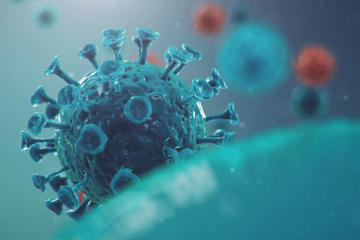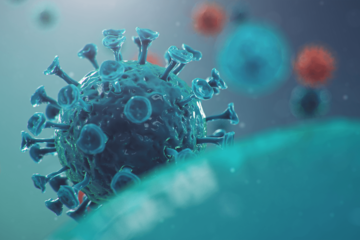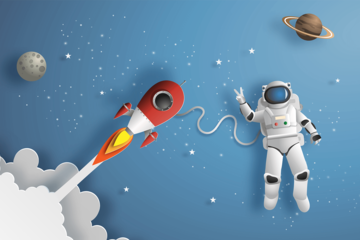We found 19 results that contain "covid-19"
Posted on: #iteachmsu


COVID-19 and impact
Normally, as a result of the significant disruption that is being caused by the COVID-19 pandemic we are very aware that many researchers will have difficulty in meeting the timelines associated with our peer review process during normal times. Please do let us know if you need additional time. Our systems will continue to remind you of the original timelines but we intend to be highly flexible at this time.
ASSESSING LEARNING
Posted on: #iteachmsu


The economic impact of COVID-19
The COVID-19 outbreak was triggered in December 2019 in the city of Wuhan, which
is in the Hubei province of China. The virus continues to spread across the world.
Although the epicentre of the outbreak was initially China, with reported cases either
in China or in travellers from the country, cases now are being reported in many other
countries. While some countries have been able to effectively treat reported cases, it
is uncertain where and when new cases will emerge. Amidst the significant public
health risk COVID-19 poses to the world, the World Health Organization (WHO) has
declared a public health emergency of international concern to coordinate international
responses to the disease. It is, however, currently debated whether COVID-19 could
potentially escalate to a global pandemic.
In a strongly connected and integrated world, the impacts of the disease beyond
mortality (those who die) and morbidity (those who are unable to work for a period of
time) has become apparent since the outbreak. Amidst the slowing down of the Chinese
economy with interruptions to production, the functioning of global supply chains has
been disrupted. Companies across the world, irrespective of size, that are dependent
upon inputs from China have started experiencing contractions in production. Transport
being limited and even restricted among countries has further slowed global economic
activities. Most importantly, some panic among consumers and firms has distorted
usual consumption patterns and created market anomalies. Global financial markets
have also been responsive to the changes and global stock indices have plunged.
is in the Hubei province of China. The virus continues to spread across the world.
Although the epicentre of the outbreak was initially China, with reported cases either
in China or in travellers from the country, cases now are being reported in many other
countries. While some countries have been able to effectively treat reported cases, it
is uncertain where and when new cases will emerge. Amidst the significant public
health risk COVID-19 poses to the world, the World Health Organization (WHO) has
declared a public health emergency of international concern to coordinate international
responses to the disease. It is, however, currently debated whether COVID-19 could
potentially escalate to a global pandemic.
In a strongly connected and integrated world, the impacts of the disease beyond
mortality (those who die) and morbidity (those who are unable to work for a period of
time) has become apparent since the outbreak. Amidst the slowing down of the Chinese
economy with interruptions to production, the functioning of global supply chains has
been disrupted. Companies across the world, irrespective of size, that are dependent
upon inputs from China have started experiencing contractions in production. Transport
being limited and even restricted among countries has further slowed global economic
activities. Most importantly, some panic among consumers and firms has distorted
usual consumption patterns and created market anomalies. Global financial markets
have also been responsive to the changes and global stock indices have plunged.
NAVIGATING CONTEXT
Posted on: #iteachmsu


Avoid squandering a post-COVID-19 fish bounty
Unlike other investments, living ocean resources literally grow during downturns. During World War II, many fishing vessels were forced to stop fishing. This reprieve allowed fish populations, such as cod, to increase. Should any such gains be accruing during COVID-19, we must resist the urge to immediately over-harvest them. Instead, we should use fisheries science to design intelligent harvest-yield protocols that maximize the long-term benefit of any possible COVID-19 gains.
NAVIGATING CONTEXT
Posted on: #iteachmsu


How Iceland hammered COVID with science
Driving along Reykjavik’s windswept roads on a cold March morning, Kári Stefánsson turned up the radio. The World Health Organization had just announced that an estimated 3.4% of people infected with SARS-CoV-2 would die — a shockingly high fatality rate, some 30 times larger than that for seasonal influenza.
There was a problem with that estimate, however: it was based on reported cases of COVID-19, rather than all cases, including mild and asymptomatic infections. “I couldn’t figure out how they could calculate it out without knowing the spread of the virus,” recalls Stefánsson, who is the founder and chief executive of deCODE genetics, a human-genomics company in Reykjavik. He became convinced that making sense of the epidemic, and protecting the people of Iceland from it, would require a sweeping scientific response.
There was a problem with that estimate, however: it was based on reported cases of COVID-19, rather than all cases, including mild and asymptomatic infections. “I couldn’t figure out how they could calculate it out without knowing the spread of the virus,” recalls Stefánsson, who is the founder and chief executive of deCODE genetics, a human-genomics company in Reykjavik. He became convinced that making sense of the epidemic, and protecting the people of Iceland from it, would require a sweeping scientific response.
Posted on: #iteachmsu

Protect yourself and others from the spread COVID-19
Regularly and thoroughly clean your hands with an alcohol-based hand rub or wash them with soap and water. Why? Washing your hands with soap and water or using alcohol-based hand rub kills viruses that may be on your hands.
Maintain at least 1 metre (3 feet) distance between yourself and others. Why? When someone coughs, sneezes, or speaks they spray small liquid droplets from their nose or mouth which may contain virus. If you are too close, you can breathe in the droplets, including the COVID-19 virus if the person has the disease.
Maintain at least 1 metre (3 feet) distance between yourself and others. Why? When someone coughs, sneezes, or speaks they spray small liquid droplets from their nose or mouth which may contain virus. If you are too close, you can breathe in the droplets, including the COVID-19 virus if the person has the disease.
Authored by: University of Texas at Austin public research university in Austin, Texas and the flagship institution of the University of Texas Syste
Disciplinary Content
Posted on: #iteachmsu


Tasks of Recruiters and How to Ease Them
The Covid-19 pandemic has created upheavals across industries and the year 2020 has seen unprecedented levels of unemployment. This means that hiring is becoming increasingly competitive due to the sheer volume of applicants, making the job of recruiters even more challenging. If at this time, your recruiters are busy doing their tasks manually, then most probably the goals that you would have laid out for your staffing firm this year are not going to be met or it would be challenging to meet them. Recruiters need to start thinking strategically for your firm to succeed in these times.
Technology is known for easing the challenges of any industry and staffing is no different. Irrespective of this global crisis, a strong technology stack can empower your recruiters and ensure that they face the challenges of the industry head on.
In this blog, we have listed some of the tedious tasks that recruiters have to do while hiring and how they can be eased with the use of technology.
Deal Sheets
Deal sheets, especially for healthcare staffing firms, require recruiters to perform the complex mathematical calculations and to determine rates and margins profitably. Deal sheets need to change on a client-by-client or job-by-job basis. This means changing burden types and rules for every single client or job.
This is just the tip of the iceberg. Taxes need to be loaded in the calculation, orientation rates need to be set, overtime thresholds need to be set up, and more. Recruiters need to refer to the GSA database to populate lodging and per diem rates based on the location of the job.
If done manually this can be extremely complicated with a high risk of human error. An ATS that supports deal sheets configuration can be invaluable in such cases and can save a lot of time and improve productivity for recruiters.
How can TargetRecruit Help?
TargetRecruit’s Deal Sheets with Pay Packages feature helps recruiters dynamically confirm rates for both candidates and clients on the fly while adhering to contractual rates and maintaining margins. All the calculations are done on a deal sheets template, which can then be assigned to a client or a job. See this video and pdf to learn more.
To help close the loop, we offer the ability to send Pay Packages. Every time a job is created, including those from your VMS, and every time an applicant is created, including those from your website, you can automatically send formatted and personalized customized pay package emails to your candidates based on criteria you determine.
Emails
Most recruiters receive a huge volume of emails a day, from candidates or clients. In a scenario without the right technology in place, the recruiter will be moving back and forth between email and the ATS. So every time, a recruiter gets an email from a new contact or a candidate, he has to go to the ATS and create the profile manually. When a client sends a job order in an email, the job needs to be created in the ATS separately.
This may be manageable for smaller volumes but can easily tie up too much of a consultants time when the number of applicants increases, and can result in delays making candidates and jobs live, or result in only a selection of candidates making it into the ATS.
But, email is still the preferred communication channel for staffing firms, and it’s not going to change anytime soon. The solution is an ATS with a fully integrated email solution, allowing seamless blending of data between the email client and the ATS database. Candidate resumes and job briefs can be added in seconds and are immediately available for consultants to work on.
How can TargetRecruit Help?
With TargetRecruit Email Connector, TargetRecruit ATS can be integrated with Outlook or Gmail, you can view and access information about clients, candidates, and contacts directly from your inbox. Email integration will allow you to track all candidates and client emails automatically. You can quickly add a contact or a candidate from Outlook or Gmail, create job orders, parse resumes or add notes- all from your inbox. See this video and pdf to learn more.
Technology is known for easing the challenges of any industry and staffing is no different. Irrespective of this global crisis, a strong technology stack can empower your recruiters and ensure that they face the challenges of the industry head on.
In this blog, we have listed some of the tedious tasks that recruiters have to do while hiring and how they can be eased with the use of technology.
Deal Sheets
Deal sheets, especially for healthcare staffing firms, require recruiters to perform the complex mathematical calculations and to determine rates and margins profitably. Deal sheets need to change on a client-by-client or job-by-job basis. This means changing burden types and rules for every single client or job.
This is just the tip of the iceberg. Taxes need to be loaded in the calculation, orientation rates need to be set, overtime thresholds need to be set up, and more. Recruiters need to refer to the GSA database to populate lodging and per diem rates based on the location of the job.
If done manually this can be extremely complicated with a high risk of human error. An ATS that supports deal sheets configuration can be invaluable in such cases and can save a lot of time and improve productivity for recruiters.
How can TargetRecruit Help?
TargetRecruit’s Deal Sheets with Pay Packages feature helps recruiters dynamically confirm rates for both candidates and clients on the fly while adhering to contractual rates and maintaining margins. All the calculations are done on a deal sheets template, which can then be assigned to a client or a job. See this video and pdf to learn more.
To help close the loop, we offer the ability to send Pay Packages. Every time a job is created, including those from your VMS, and every time an applicant is created, including those from your website, you can automatically send formatted and personalized customized pay package emails to your candidates based on criteria you determine.
Emails
Most recruiters receive a huge volume of emails a day, from candidates or clients. In a scenario without the right technology in place, the recruiter will be moving back and forth between email and the ATS. So every time, a recruiter gets an email from a new contact or a candidate, he has to go to the ATS and create the profile manually. When a client sends a job order in an email, the job needs to be created in the ATS separately.
This may be manageable for smaller volumes but can easily tie up too much of a consultants time when the number of applicants increases, and can result in delays making candidates and jobs live, or result in only a selection of candidates making it into the ATS.
But, email is still the preferred communication channel for staffing firms, and it’s not going to change anytime soon. The solution is an ATS with a fully integrated email solution, allowing seamless blending of data between the email client and the ATS database. Candidate resumes and job briefs can be added in seconds and are immediately available for consultants to work on.
How can TargetRecruit Help?
With TargetRecruit Email Connector, TargetRecruit ATS can be integrated with Outlook or Gmail, you can view and access information about clients, candidates, and contacts directly from your inbox. Email integration will allow you to track all candidates and client emails automatically. You can quickly add a contact or a candidate from Outlook or Gmail, create job orders, parse resumes or add notes- all from your inbox. See this video and pdf to learn more.
Posted by: Kalon Locaz
Disciplinary Content
Posted on: #iteachmsu


The relationship between science and technology
Science, technology and innovation each represent a successively larger category of activities which are highly interdependent but distinct. Science contributes to technology in at least six ways: (1) new knowledge which serves as a direct source of ideas for new technological possibilities; (2) source of tools and techniques for more efficient engineering design and a knowledge base for evaluation of feasibility of designs; (3) research instrumentation, laboratory techniques and analytical methods used in research that eventually find their way into design or industrial practices, often through intermediate disciplines; (4) practice of research as a source for development and assimilation of new human skills and capabilities eventually useful for technology; (5) creation of a knowledge base that becomes increasingly important in the assessment of technology in terms of its wider social and environmental impacts; (6) knowledge base that enables more efficient strategies of applied research, development, and refinement of new technologies.
Posted by: Greg Thomsan
Posted on: #iteachmsu


robot pet that can interact with humans.
In the intersection of space travel and robotics, Jihee Kim introduces Laika — a concept design for a life-like, AI robot pet that can interact with humans. Laika has been designed for upcoming space projects such as NASA’s Artemis and Moon to Mars missions set for 2025-2030, envisioned as the ultimate companion for space explorers as it caters to both their physical and emotional well-being while they are away from home. Unlike the aggressive robotic dogs currently available on the market, Jihee Kim has designed Laika with a friendly and organic finish that enables it to connect to its human counterpart on an emotional level when in use while monitoring their health conditions and assisting them in emergencies. Beyond space missions, this approachable design allows Laika to integrate into domestic contexts.
Image :
video link : Embedded URL test :
Table :
Sr NO
Assignee
Task
Cat 1
Rohit
Test 1
Cat 2
Shweta
Test 2
Numbering :
Number 1
Number 2
Bullets :
Bullets 1
Bullets 2
Bullets 3
URL : https://www.designboom.com/technology/life-like-ai-robot-dog-laika-space-travelers-jihee-kim-11-19-2023/
Image :
video link : Embedded URL test :
Table :
Sr NO
Assignee
Task
Cat 1
Rohit
Test 1
Cat 2
Shweta
Test 2
Numbering :
Number 1
Number 2
Bullets :
Bullets 1
Bullets 2
Bullets 3
URL : https://www.designboom.com/technology/life-like-ai-robot-dog-laika-space-travelers-jihee-kim-11-19-2023/
Authored by: Vijayalaxmi vishwanath mali
Posted on: #iteachmsu


Beyond space missions, this approachable design allows Laika to integrate into domestic contexts.
In the intersection of space travel and robotics, Jihee Kim introduces Laika — a concept design for a life-like, AI robot pet that can interact with humans. Laika has been designed for upcoming space projects such as NASA’s Artemis and Moon to Mars missions set for 2025-2030, envisioned as the ultimate companion for space explorers as it caters to both their physical and emotional well-being while they are away from home. Unlike the aggressive robotic dogs currently available on the market, Jihee Kim has designed Laika with a friendly and organic finish that enables it to connect to its human counterpart on an emotional level when in use while monitoring their health conditions and assisting them in emergencies. Beyond space missions, this approachable design allows Laika to integrate into domestic contexts.
Image :
video link : Embedded URL test :
Table :
Sr NO
Assignee
Task
Cat 1
Rohit
Test 1
Cat 2
Shweta
Test 2
Numbering :
Number 1
Number 2
Bullets :
Bullets 1
Bullets 2
Bullets 3
URL : https://www.designboom.com/technology/life-like-ai-robot-dog-laika-space-travelers-jihee-kim-11-19-2023/
Image :
video link : Embedded URL test :
Table :
Sr NO
Assignee
Task
Cat 1
Rohit
Test 1
Cat 2
Shweta
Test 2
Numbering :
Number 1
Number 2
Bullets :
Bullets 1
Bullets 2
Bullets 3
URL : https://www.designboom.com/technology/life-like-ai-robot-dog-laika-space-travelers-jihee-kim-11-19-2023/
Authored by: vijayalaxmi vishwanath mali
Posted on: #iteachmsu

India vs England, LIVE Cricket Score Updates, 2nd Test Match Day 1 at Lord’s: Rain delays toss, pitches still under cover
Live Cricket Score Updates, India vs England: Rain has delayed the toss as Virat Kohli-led India eye redemption against England in the second Test of their five-match series at Lord’s on Thursday.
Live Updates: The toss was delayed due to rain as India face England in the second Test at Lord’s. The visitors trail 1-0 after they were beaten in the first encounter at Edgbaston and Virat Kohli & Co will look to produce a better show on a ground where they have won just 2 out of their last 17 Test matches. Kohli will be banking on his top-order batsmen to fire after a disappointing show in the first Test and the visitors can opt for a second spin option in Kuldeep Yadav. For England, Ollie Pope will be making his debut with Moeen Ali possibly playing alongside Adil Rashid in the spin department.
Live Updates: The toss was delayed due to rain as India face England in the second Test at Lord’s. The visitors trail 1-0 after they were beaten in the first encounter at Edgbaston and Virat Kohli & Co will look to produce a better show on a ground where they have won just 2 out of their last 17 Test matches. Kohli will be banking on his top-order batsmen to fire after a disappointing show in the first Test and the visitors can opt for a second spin option in Kuldeep Yadav. For England, Ollie Pope will be making his debut with Moeen Ali possibly playing alongside Adil Rashid in the spin department.
Posted by: Chathuri Super admin..
Navigating Context
Posted on: #iteachmsu

What is Attention Deficit Hyperactivity Disorder?
Classroom Interventions for Attention Deficit/ Hyperactivity Disorder Considerations Packet
Iteach MSU : Get started
ADHD is one of the most commonly diagnosed conditions of children (Centers for DiseaseControl and Prevention, 2015).
In a 2016 Centers for Disease Control and Prevention study, scientists found that 6.1 million children aged 2-17 years living in the U.S. had been diagnosed with attention-deficit/hyperactivity disorder (ADHD), which is similar to previous estimates.
Ages 2-5: Approximately 388,000 children
Ages 6-11: Approximately 2.4 million children
Ages 12-17: Approximately 3.3 million children
Iteach MSU : Get started
ADHD is one of the most commonly diagnosed conditions of children (Centers for DiseaseControl and Prevention, 2015).
In a 2016 Centers for Disease Control and Prevention study, scientists found that 6.1 million children aged 2-17 years living in the U.S. had been diagnosed with attention-deficit/hyperactivity disorder (ADHD), which is similar to previous estimates.
Ages 2-5: Approximately 388,000 children
Ages 6-11: Approximately 2.4 million children
Ages 12-17: Approximately 3.3 million children
Authored by: Primer text from The College of William & Mary
Posted on: #iteachmsu

Reported Cases and Deaths by Country, Territory, or Conveyance
The coronavirus COVID-19 is affecting 218 countries and territories around the world and 2 international conveyances. The day is reset after midnight GMT+0. The list of countries and territories and their continental regional classification is based on the United Nations Geoscheme. Sources are provided under "Latest Updates". Learn more about Worldometer's COVID-19 data
The coronavirus COVID-19 is affecting 218 countries and territories around the world and 2 international conveyances. The day is reset after midnight GMT+0. The list of countries and territories and their continental regional classification is based on the United Nations Geoscheme. Sources are provided under "Latest Updates". Learn more about Worldometer's COVID-19 data
Posted by: Greg Thomsan
Disciplinary Content
Posted on: #iteachmsu


The virus that causes COVID-19 is mainly transmitted through droplets generated when an infected person coughs, sneezes, or exhales. These droplets are too heavy to hang in the air, and quickly fall on floors or surfaces.
You can be infected by breathing in the virus if you are within close proximity of someone who has COVID-19, or by touching a contaminated surface and then your eyes, nose or mouth.
The virus that causes COVID-19 is mainly transmitted through droplets generated when an infected person coughs, sneezes, or exhales. These droplets are too heavy to hang in the air, and quickly fall on floors or surfaces.
You can be infected by breathing in the virus if you are within close proximity of someone who has COVID-19, or by touching a contaminated surface and then your eyes, nose or mouth.
The virus that causes COVID-19 is mainly transmitted through droplets generated when an infected person coughs, sneezes, or exhales. These droplets are too heavy to hang in the air, and quickly fall on floors or surfaces.
You can be infected by breathing in the virus if you are within close proximity of someone who has COVID-19, or by touching a contaminated surface and then your eyes, nose or mouth.
You can be infected by breathing in the virus if you are within close proximity of someone who has COVID-19, or by touching a contaminated surface and then your eyes, nose or mouth.
The virus that causes COVID-19 is mainly transmitted through droplets generated when an infected person coughs, sneezes, or exhales. These droplets are too heavy to hang in the air, and quickly fall on floors or surfaces.
You can be infected by breathing in the virus if you are within close proximity of someone who has COVID-19, or by touching a contaminated surface and then your eyes, nose or mouth.
The virus that causes COVID-19 is mainly transmitted through droplets generated when an infected person coughs, sneezes, or exhales. These droplets are too heavy to hang in the air, and quickly fall on floors or surfaces.
You can be infected by breathing in the virus if you are within close proximity of someone who has COVID-19, or by touching a contaminated surface and then your eyes, nose or mouth.
Posted by: Chathuri Super admin..
Disciplinary Content
Posted on: #iteachmsu

Reported Cases and Deaths by Country, Territory, or Conveyance
The coronavirus COVID-19 is affecting 218 countries and territories around the world and 2 international conveyances. The day is reset after midnight GMT+0. The list of countries and territories and their continental regional classification is based on the United Nations Geoscheme. Sources are provided under "Latest Updates". Learn more about Worldometer's COVID-19 data
The coronavirus COVID-19 is affecting 218 countries and territories around the world and 2 international conveyances. The day is reset after midnight GMT+0. The list of countries and territories and their continental regional classification is based on the United Nations Geoscheme. Sources are provided under "Latest Updates". Learn more about Worldometer's COVID-19 data
Posted by: Greg Thomsan
Disciplinary Content
Posted on: #iteachmsu


Genetics: The scientific study of heredity. Genetics pertains to humans and all other organisms. So, for example, there is human genetics, mouse genetics, fruit fly genetics, etc.
Human genetics today comprises a number of overlapping fields, including:
Classical or formal genetics -- the study of the transmission of single genes within families and the analysis of more complex types of inheritance.
Clinical genetics -- the diagnosis, prognosis and, in some cases, the treatment of genetic diseases.
REF: https://www.medicinenet.com/genetics/definition.htm
Human genetics today comprises a number of overlapping fields, including:
Classical or formal genetics -- the study of the transmission of single genes within families and the analysis of more complex types of inheritance.
Clinical genetics -- the diagnosis, prognosis and, in some cases, the treatment of genetic diseases.
REF: https://www.medicinenet.com/genetics/definition.htm
Posted by: Chathuri Super admin..
Disciplinary Content
Posted on: #iteachmsu


What is social distancing?
Social distancing, also called “physical distancing,” means keeping a safe space between yourself and other people who are not from your household.To practice social or physical distancing, stay at least 6 feet (about 2 arms’ length) from other people who are not from your household in both indoor and outdoor spaces.
Social distancing should be practiced in combination with other everyday preventive actions to reduce the spread of COVID-19, including wearing masks, avoiding touching your face with unwashed hands, and frequently washing your hands with soap and water :
Social distancing, also called “physical distancing,” means keeping a safe space between yourself and other people who are not from your household.To practice social or physical distancing, stay at least 6 feet (about 2 arms’ length) from other people who are not from your household in both indoor and outdoor spaces.
Social distancing should be practiced in combination with other everyday preventive actions to reduce the spread of COVID-19, including wearing masks, avoiding touching your face with unwashed hands, and frequently washing your hands with soap and water :
Posted by: Chathuri Super admin..
Disciplinary Content
Posted on: #iteachmsu

HPB | Live updates on New Coronavirus (COVID-19) outbreakwww.hpb.health.gov.lk
Official LIVE updates and the latest news from the Sri Lankan Government on the Coronavirus outbreak, and basic protective measures against the new virus.
Official LIVE updates and the latest news from the Sri Lankan Government on the Coronavirus outbreak, and basic protective measures against the new virus.
Posted by: Chathuri Hewapathirana
Navigating Context
Posted on: #iteachmsu


"Nobody wants to see more restrictions, but this is deemed to be necessary in order to protect Londoners' lives," London Mayor Sadiq Khan told the London Assembly. https://www.npr.org/2020/10/26/927064268/youre-not-welcome-here-how-social-distancing-can-destroy-the-global-economy
Posted by: Greg Thomsan
Navigating Context
